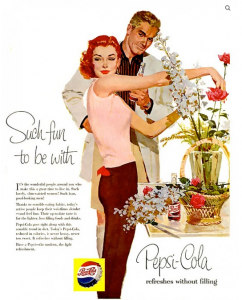[contextly_auto_sidebar id=”FSBn2DLrnWZBS8DufCMUcy7PwGEjKVRO”]
DO we misread our cultural past, especially the 1950s? Today marks the debut of CultureCrash guest columnist Lawrence Christon, a veteran arts and entertainment journalist in LA, author of a book about South Coast Repertory, and a longtime friend. Larry will be weighing in on various topics about the past, present and future of culture and society. While we agree on numerous subjects, we’re not the same person, and our thinking will differ in major and minor ways. This all said, very glad to offer CultureCrash’s first guest column today.
I’ll add that the 1950s — and the whole midcentury period — is an important theme in my upcoming book,  .
.
“The Forgotten Fifties”
If it wasn’t punishing enough to hear yet another dim standup offer an absurdly uninformed summation of an experience he never had, it was even more galling to read, in Slate, Patton Oswalt’s crack about the “cultural neck brace” that was the 1950s. As that seems to be an impression widely shared by the ADD generation, consider this a public service announcement.
